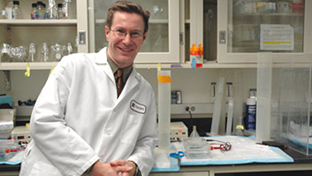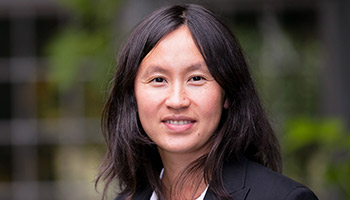amfAR Advances Collaborative Bioengineering Studies Aimed at Curing HIV
New amfAR grants support third phase of high-tech projects using nanotechnology and protein “fingerprinting”
In April 2019, amfAR awarded new funding to researchers using cutting-edge technology to address the main barrier to a cure for HIV: the persistent reservoirs of virus not cleared by antiretroviral therapy. Totaling $1.6 million, this new round of Investment grants launches the critical third phase of two research projects launched in 2017.
Investment awards are milestone-based grants for research studies undertaken over four years in three phases. In this third phase, bioengineers are working in partnership with leading HIV cure scientists to tackle some of the most difficult challenges in HIV cure research. The grants are part of amfAR’s $100 million Countdown to a Cure for AIDS initiative, which is aimed at developing the scientific basis of a cure by the end of 2020.

Dr. Keith Jerome
“At amfAR, we believe that combining innovation with collaboration is the surest way to a cure for HIV,” said amfAR CEO Kevin Robert Frost. “These awards are an outstanding example of that philosophy in action and we will follow the progress of these exceptional grantees with great interest.”
One of the biggest challenges in HIV cure research is that until now, it has been impossible to pinpoint and kill HIV reservoir cells, since no one has been able to identify a unique characteristic, or marker, that sets them apart from non-reservoir cells. Dr. Hui Zhang of Johns Hopkins University, a leading expert in the field of mass spectrometry, is applying this protein “fingerprinting” technique to the challenge.
In the first two phases of the study, Dr. Zhang used mass spectrometry to scan the surface of human cells for proteins that discriminate between latently infected and uninfected cells. After scanning a variety of cell lines, she identified 17 potential targets. In phase three, Dr. Zhang is teaming up with HIV scientist Dr. Weiming Yang, also of Johns Hopkins University, to determine in a preclinical study whether specifically killing cells displaying any of these 17 proteins will eliminate the latent reservoir.

On the West Coast, Dr. Keith Jerome and bioengineer Dr. Kim Woodrow, both at the University of Washington in Seattle, are focusing on identifying a potent latency reversing agent (LRA) that can shock the reservoir out of latency, the first stage in a “shock and kill” strategy to cure HIV.
“These four-year investment grants have enabled us to support some remarkable collaborative research that needs more than just a year or two to show meaningful results,” said Dr. Rowena Johnston, amfAR vice president and director of research. “If these researchers manage to accomplish what they’ve set out to do, we will have overcome two of the biggest obstacles standing in the way of a cure for HIV.”
Share This:
